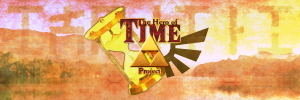
The Hero of Time Project is an attempt to re-examine the narrative vacuum in the Legend of Zelda series between Majora’s Mask and Twilight Princess, and to utilize the concept of fan fiction to logically fill in some of the gaps using information presented to us in existing lore.
Hello! Welcome back to the Hero of Time Project. With this article, our attempt to create passably good fan fiction continues on! Today we’re going to review the setting of our fan fiction, and talk about the where, and more importantly, the when. Legend of Zelda, as a franchise, is famed for its convoluted timeline of sequels that don’t necessarily fit neatly together. So many of the games feature changes and updates that often outright contradict previous games; so when planning to tell a story (game, comic, or otherwise), it’s incredibly important to establish when said addition occurs.
The Legend of Zelda: Ocarina of Time is heralded by many as one of the most impactful, beloved, and revered video games from any era. With a Terrible Fate’s Dan Hughes said that “Ocarina of Time is to video games what Citizen Kane is to cinema.” Ocarina of Time is often given this level of recognition as a result of the gameplay, the characterization of its protagonist, the storytelling, or some combination of these and other characteristics, along with a sense of accidental genius that gave the game the tone and flavor by which we recognize it.
It’s also a divisive game within the Legend of Zelda fanbase: while some Zelda fanatics cherish it and place it on an arguably nostalgia-constructed pedestal, others see it as uninspired, featuring metaphorically two-dimensional characters in Legend of Zelda’s first foray into the third dimension. For example, Egoraptor’s Sequelitis review was very critical of the series’ direction as a whole, which is still a widely-argued point of contention in the fanbase. His biggest issue with the series was the substitution of patience in place of difficulty. Waiting for an enemy to reveal its weak point, waiting until the right time of day, waiting while text scrolls endlessly when one accidentally asks a character to repeat what he or she just said—this, he claims, is why the game is best understood as a lackluster waiting simulator.
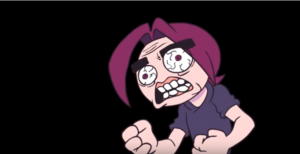
In his Sequelitis video on Ocarina of Time, Egoraptor perfectly captures our faces while waiting for enemies’ red glowing weak points.
What one cannot argue is the massive cultural impact this game had on fans of the series, or the fact that this game is a pivotal moment in the series’ timeline, splitting it into three separate timelines that give way to the other games in the series. One of these timelines, dubbed the “Child Timeline,” contains the immediate sequel Majora’s Mask, and, over a century later, the subsequent game Twilight Princess. This timeline will be the focus of this article.
Each Legend of Zelda game tends to be a self-contained story: a new Link, a new Zelda, a new iteration of Hyrule. However, a timeline does effectively connect all of the many different Legend of Zelda games. Ocarina and Majora’s Mask are sequential, with Majora’s Mask picking up shortly after the events of Ocarina of Time; on the other hand, just over an entire century separates the conclusion of Majora’s Mask from the beginning of Twilight Princess.
During this century of time, an incredible number of changes seem to have occurred. For instance:
- After the events of Ocarina of Time, Ganondorf, the main antagonist of the game, was to be executed, but was instead sealed away using the Mirror of Twilight.
- The Zoras move Zora’s Domain from being south of Hyrule to north of it, implying any number of huge political changes in a game and story that tends to shy away from political shifts in its series.
- The Lost Woods, an integral location in Ocarina, takes on a whole new tone: by the time Twilight Princess occurs, characters like the Kokiri Children and the Deku Tree are nowhere to be seen, the Forest Temple is replaced by—or has become the new Temple of Time, and a new human village is founded named Ordon Village.
- Death Mountain now has a mine inside of it, built by the Goron.
- The Kokiri Children are nowhere to be seen, and almost all trace of their existence is gone—with the exception of one or two skull kids.
- And pretty much every temple from Ocarina of Time is mysteriously gone—except for the Water Temple (The Forest Temple in Twilight Princess is a different location, and the Temple of Time in Twilight Princess is where the Forest Temple from Ocarina of Time should be).
Unexplainable geographic changes are a common, and often unavoidable, theme in the Zelda series. After all, every new game uses a different engine with new capabilities, and every new writer or artist tends to want to put their own spin on the classic locale. Each new game inevitably becomes a new translation of a more abstract concept of what Hyrule is. Rather than a concrete thing that continues to grow and exist under the same rules, every game essentially reinvents the same Hyrule by changing the details of geography and history while maintaining the identity of the thing as Hyrule.

A map of Hyrule from A Link to the Past.
However, this hasn’t stopped fans and even the series developers from trying to bridge the gaps and reconcile the differences between games; after all, internal consistency in fictional worlds and stories is still an important element of getting a player, or viewer, to become invested. While there are always irreconcilable differences between some sequels, it’s still very rewarding, and frankly mandatory, to find the time to fill in the gaps, explain why things changed, and remember that any series set in one continuous world is telling a quiet secondary story about the story world itself. Without that pointed, purposeful coherence, a reader, a viewer, or a player can become lost and disinterested in trying to imagine a world that defies itself. In Tolkien’s essay, Fairy Stories, he explained this dynamic by saying:
To make a Secondary World inside which the green sun will be credible, commanding Secondary Belief, will probably require labour and thought, and will certainly demand a special skill, a kind of elvish craft. Few attempt such difficult tasks. But when they are attempted and in any degree accomplished then we have a rare achievement of Art: indeed narrative art, story-making in its primary and most potent mode.
What this means for the Zelda franchise is that, in order to create a wonderful and magical world with a level of credibility in narrative, one must put forth a great deal of effort and thought. It is often said that nothing worth having comes with ease—and the Legend of Zelda series has been constantly blessed with adoring fans who work ceaselessly to fill in the gaps themselves in order to reinforce their secondary beliefs about the series’ world.
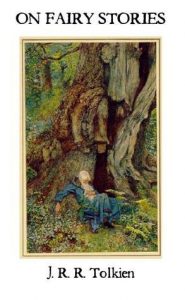
On that note, the century-and-some-change between Ocarina of Time and Twilight Princess is probably one of the most interesting gaps to fill in because the close proximity in time of those two games creates both an abundance of stories and answers to our leftover questions, but also an equally frustrating and paradoxical abundance of new questions that come with those answers. The concept of using only the one century between those two stories to quickly and offhandedly explain away all of the many changes that occur is valid in theory, but it leaves something to be desired by the player because some key elements of the overall timeline remain unexplained, and that gap stretches the imagination and immersion of the viewer. Our hope is that, with this article series, we can begin to develop some of these missing explanations, and then with those answers in hand, we, together, can take a journey into a new direction: a journey to a place of coherence, and understanding where we can begin to tell you our own fan-fiction story.
Most Legend of Zelda titles follow a fairly predictable structure of events: something bad happens, Ganondorf returns, Zelda gets kidnapped, and Link saves the day, committing acts of vandalism and petty larceny. There are always minor detail differences between installments, but Legend of Zelda is a series that prides itself on the value of cyclical storytelling. In many ways, it’s a story of youthfulness and courageousness being not just aspects of the main character, but rather constant, timeless values that conquer evil, keep the universe spinning, and happen to manifest themselves in an apt avatar: the young, infinitely courageous Link.
Ocarina of Time, being a time-travel story, has a complicated relationship when contrasted against Majora’s Mask and Twilight Princess, and really to the rest of the series as a whole.
In Ocarina, the Hero of Time is a young child who is thrown into adventure at the behest of an ancient spirit tree who tells him that he has the power and responsibility to save Hyrule and everyone in it. The game runs through several dungeons and levels as Link searches for the Spiritual Stones, which are the keys to the Door of Time, and subsequently, the Master Sword. Once it comes into his possession, he is thrown 7 years into the future and forced to do battle with Ganondorf’s evil forces in a drastically altered reality.
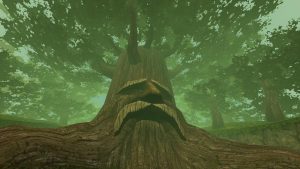
One of Link’s mentors, and the first dungeon of Ocarina of Time: The Deku Tree.
Link continues to quest and search for ways to free Zelda and Hyrule from Ganondorf’s clutches; along the way, Link awakens a group of sages: powerful, magic-bearing beings in Hyrule who have the power to help Link along in his quest. Many of the sages are friends of Link who have to say goodbye when they transcend into the Sacred Realm.[1] Once Link has freed all the sages, he sets out to face Ganondorf head-on. The whole thing culminates at the top of Hyrule’s royal castle, where Adult Link fights Ganondorf one-on-one. From the perspective of the player, the story ends when Link defeats Ganondorf and his demon form Ganon, but in the canon of the series, there are actually three possible endings, each of which leads to a distinct timeline. These separated timelines were originally created to explain the events of many of the other sequels to Legend of Zelda.
- The first is the timeline where Adult Link fights Ganondorf. While the player stays with Link as he travels back to his childhood, the events of the Adult Era continue on in their own timeline.
- A second timeline follows from the outcome where Link fails to defeat Ganondorf, and Hyrule plunges into darkness.
- In the case of the game’s actual ending, Link is victorious, Ganon dies, and then Link is sent home to his Childhood, whose events end up in a third timeline, vastly different from the other two timelines: the Child Era.
The Child Era begins as Link’s adventure winds down in Ocarina of Time: Ganondorf is charged (presumably with treason) and sentenced to death. Meanwhile, Link doesn’t exactly stick around; eventually, he leaves to find his fairy, Navi, which sparks the events of Majora’s Mask.
In Majora’s Mask, The Hero of Time’s story is continued as Link leaves Hyrule and enters a parallel reality known as Termina. There, Link encounters an entity known only as Skull Kid, a member of a race of skull kids who are essentially lost children transformed into little imps. Skull Kid is in possession of Majora’s Mask, a powerful and evil relic that is corrupting him and forcing him to do evil things like crashing the moon into Termina and ending all life there. Link, in the finest tradition of adventuring, travels all over Termina in order to defeat Majora’s Mask and free Skull Kid from its power, saving all of Termina from a truly terrible fate.

Tatl, Skull Kid, and Tael from Majora’s Mask.
At the end of Majora’s Mask, there isn’t a lot of meaningful change that pertains to our discussion. The events of that game aren’t necessarily unimportant, but they are largely self-contained and don’t really affect much in the Hero of Time Project beyond Link’s possible absence from Hyrule for the majority of his life—after all, Termina is a separate reality from Hyrule. Link defeats the mask, Clock Town goes back to normal, and Link continues on his quest to find his friend, Navi, presumably finding his way into new kingdoms and lands he’d never seen before. As far as we know, this is where this particular Link’s story ends. As far as the official canon of the series, the next time this Link appears, it is no longer his story.
The next game in which he appears takes place about a century[2] later: Twilight Princess. This game also happens to be the next game in this timeline. In Twilight, we see some of the fruits of the Child Era ending to Ocarina: namely, Ganondorf never died. His execution ends up botched due to his possession of the Triforce of Power. Ganondorf breaks out of his chains, murdering the Sage of Water, and, out of desperation, the remaining sages banish Ganondorf to an alternate reality known as the Twilight Realm using a powerful artifact known as The Mirror of Twilight. The main plot of the game pretty much entirely follows on this premise. Ganondorf comes back, bringing an army of corrupted twilight beings with him, and tries to cover all of Hyrule in twilight (not as fun as it sounds). A new iteration of Zelda and Link have to fight him off, and ultimately Link slays Ganondorf in a duel.
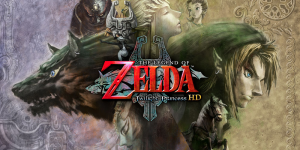
The second important element from Twilight Princess is the introduction of a mysterious new character simply named the Hero’s Shade. On his new quest, Link encounters Shade in what appears to be a kind of spirit realm, where Shade teaches Link new howls for his wolf form and new swordfighting techniques to take to task against Ganondorf.
Nintendo later confirmed in their publication the Hyrule Historia that this Shade is Link from Ocarina of Time, the same Child Era Link who continued to adventure into Majora’s Mask and then onward until his death.[3] To us, this is one of the most important details of that game. It is, firstly, one of the only direct connections between two Links in any Zelda game (pardon our “link” puns). To us, this emphasizes the importance of both Links involved in Twilight Princess, and it creates for Link a depth of character not previously realized. Secondly, this is a deadly important clue to the fate of Ocarina’s Link—even though it actually raises more questions than it answers.
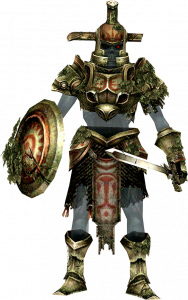
Shade’s armor is regal and gold, covered in vines—he’s also notably missing his right eye.
Shade talks about how no one remembered him as a hero, and how he was never able to pass on his techniques to anyone.[4]
“Although I accepted life as the hero, I could not convey the lessons of that life to those who came after. At last, I have eased my regrets. . . . Farewell!” —Hero’s Shade (Twilight Princess)
It’s also worth noting that Shade bears a particular resemblance to a stalfos—an undead creature that can often take shape from Kokiri children who died in the Lost Woods. Shade also has vines growing over one of his shoulders—the kind that grow in thick, largely untamed forests.
A couple of important questions can be asked here, but they all generally boil down to some variation of “What the hell happened?”
- What happened to Link after Ocarina and Majora’s Mask?
- What strange and terrible events led him to become the Shade we know in Twilight Princess? Did he continue to adventure, did he open a bakery? We don’t know!
- At what point, in years after the events of Ocarina, was Ganondorf executed? What happened to Zelda once Link left her behind? Did Link ever come back? If he did come back, why?
- Where did Link go after saving Termina? Many believe that in order for Link to become the stalfos-like Hero’s Shade, he would have had to die or be lost in the Lost Woods. Did that happen?
Answer each of these questions to yourself.
…Take your time…
How many of them did you answer with “I don’t know?” Or better yet, how many of them are answered by your own head-canon—the messy, quasi-fan-fiction stories we all write in our minds to fill in the gaps? Forgive us for thinking that there might be a story there; not simply a story that could exist, but one that should exist and one that benefits the series by not only telling a great story, but also by filling in the gaps of Zelda’s secondary world by bolstering and enhancing the consistency of the story world itself.
In fact, we, the authors of this article, have come to view Ocarina and Majora’s as the first two installments of an incomplete trilogy. If done right, our humble work of fan fiction could and likely would be a valuable addition to Legend of Zelda franchise, as well as provide the closing chapter for what we believe is an unfinished story, and an incomplete trilogy.
But, do Ocarina and Majora’s Mask really need a third game? Isn’t Twilight Princess sort of the third game to that series?
Let’s take a second to explore and talk about the concept of trilogies. Trilogies are a really important writing tool for creating large and well-tied-together stories. Like the way most stories have a beginning, middle and end; trilogies create larger stories in which the installments themselves become the beginning, middle, and end. Most good, instant-classic series end up as either a trilogy or another form of three-part storytelling. Lord of the Rings, Star Wars, The Hangover (kidding), Mass Effect (Andromeda doesn’t count), even the first Halo trilogy. This is aptly illustrated by a Cinephile by the name of Robert Frost in this quora question, wherein he talks about Aeschylus and Aristotle, as well as the scaling-up of the three-act story structure.
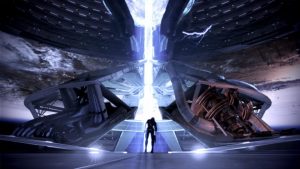
Trilogies like Mass Effect have a clearly defined arc from beginning, to middle, to (sometimes controversial) end.
The point here is that, while games like Twilight Princess and Wind Waker provide introductions to new Links and the end to Ganondorf’s story (in two different timelines), neither game truly provides an ending chapter to the Hero of Time’s story. Even Twilight Princess isn’t really the end of Ocarina Link’s story: it’s more of cameo and a cliff note on his life after death than anything else.
So, with that knowledge, it becomes more and more apparent that there is a justifiable, beneficial place for a third game to exist—not just in the way that there are simply historical holes that could be filled by our story, but also that our story completes and benefits a story arc and a character arc. So, from here, we can begin to talk about what that story is supposed to look like, and what themes and tones it has to include in order to be an effective Legend of Zelda story.
Next time on the Hero of Time Project, we’ll begin to look at and talk about some of those themes and tones, and their place in the existing franchise, as well as in our own Hero of Time story. Specifically, we’re going to explore Link’s character, his relationship to the player, and his journey through Ocarina of Time and Majora’s Mask.
[1] The exact nature of what ‘transcendence’ means for the sages is never really explained in game. Some might suppose that it requires the sage to die and be reborn, while others might simply assume it’s a change in their physical and mental nature. We simply do not know.
[2] In an interview with Eiji Aounuma, he claims “about a century and some years” pass between the games. While we can’t provide an exact number, this could be anywhere between 115 and 150 years.
[3] Admittedly, we, the authors, don’t particularly care for this way of retroactively canonizing. It seems like Nintendo canonized Shade as Link because fans at the time were huge on the idea; but ultimately, the idea that Link was never remembered for being a hero conflicts with his character. He probably would not have been remembered for the events of Ocarina of Time or Majora’s Mask, because both stories are time-travel stories that send Link back to the beginning at the end—to a time when no one knew anything was awry. In effect, Link’s canon journeys almost never happened in the minds of the people around him. However, (and head-canon warning here), despite that, the courageous and heroic nature of Link almost demands that he would have gone on to adventure for a very long time, and would have eventually done something that was both heroic and didn’t involve time travel or a memory wipe. So officially it makes sense, because Shade’s personality is built on knowledge that is strictly canon. Realistically, as far as realism of character and keeping with the convention of who Link is, it makes no sense.
[4] “Link, the descendent of the Hero of Time: […] The spirit of Link’s ancestor, the Hero of Time, teaches him his secrets. Ever since returning to the Child Era, the swordsman has lamented the fact that he was not remembered as a hero. This is the reason he passes down the proof of his courage and his secret techniques to the Link of this era, addressing him as “my child.”” (Hyrule Historia (Dark Horse Books), pg. 118.)



